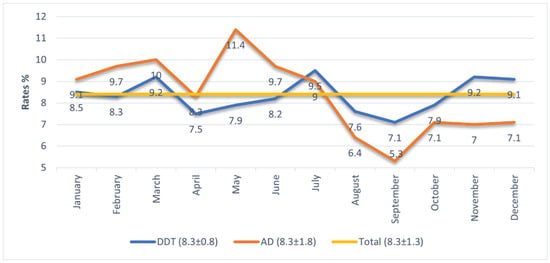-
 Oral Health in Young Adults: The Impact of Socioeconomic Factors and Health Literacy
Oral Health in Young Adults: The Impact of Socioeconomic Factors and Health Literacy -
 Diarrhea Outcomes Associated with Drinking Water Factors, Sanitation, Hygiene, and Malaria Practices in Béré, Chad
Diarrhea Outcomes Associated with Drinking Water Factors, Sanitation, Hygiene, and Malaria Practices in Béré, Chad -
 Health Promotion and Disease Prevention in Public Housing Areas: A Scoping Review
Health Promotion and Disease Prevention in Public Housing Areas: A Scoping Review -
 Nomophobia and Its Predictors: The Role of Psychological, Sociodemographic, and Internet Use Factors
Nomophobia and Its Predictors: The Role of Psychological, Sociodemographic, and Internet Use Factors -
 Determinants of Caregiving Subgroups for Mexican American Caregivers of Older Adults and Their Influence on Stress
Determinants of Caregiving Subgroups for Mexican American Caregivers of Older Adults and Their Influence on Stress
Journal Description
International Journal of Environmental Research and Public Health
- Open Access— free for readers, with article processing charges (APC) paid by authors or their institutions.
- High Visibility: indexed within Scopus, PubMed, MEDLINE, PMC, Embase, GEOBASE, CAPlus / SciFinder, and other databases.
- Journal Rank: CiteScore - Q1 (Public Health, Environmental and Occupational Health)
- Rapid Publication: manuscripts are peer-reviewed and a first decision is provided to authors approximately 27.8 days after submission; acceptance to publication is undertaken in 3.9 days (median values for papers published in this journal in the first half of 2025).
- Recognition of Reviewers: reviewers who provide timely, thorough peer-review reports receive vouchers entitling them to a discount on the APC of their next publication in any MDPI journal, in appreciation of the work done.
- Testimonials: See what our editors and authors say about IJERPH.
- Sections: published in 7 topical sections.
- Companion journal: Air.
- Journal Cluster of Healthcare Sciences and Services: Geriatrics, Journal of Ageing and Longevity, Healthcare, Hospitals, Hygiene, International Journal of Environmental Research and Public Health and Nursing Reports.
Latest Articles
Highly Accessed Articles
Latest Books
E-Mail Alert
News
Topics
Deadline: 31 December 2025
Deadline: 20 January 2026
Deadline: 28 February 2026
Deadline: 15 March 2026
Conferences
Special Issues
Deadline: 15 December 2025
Deadline: 20 December 2025
Deadline: 30 December 2025
Deadline: 30 December 2025
























